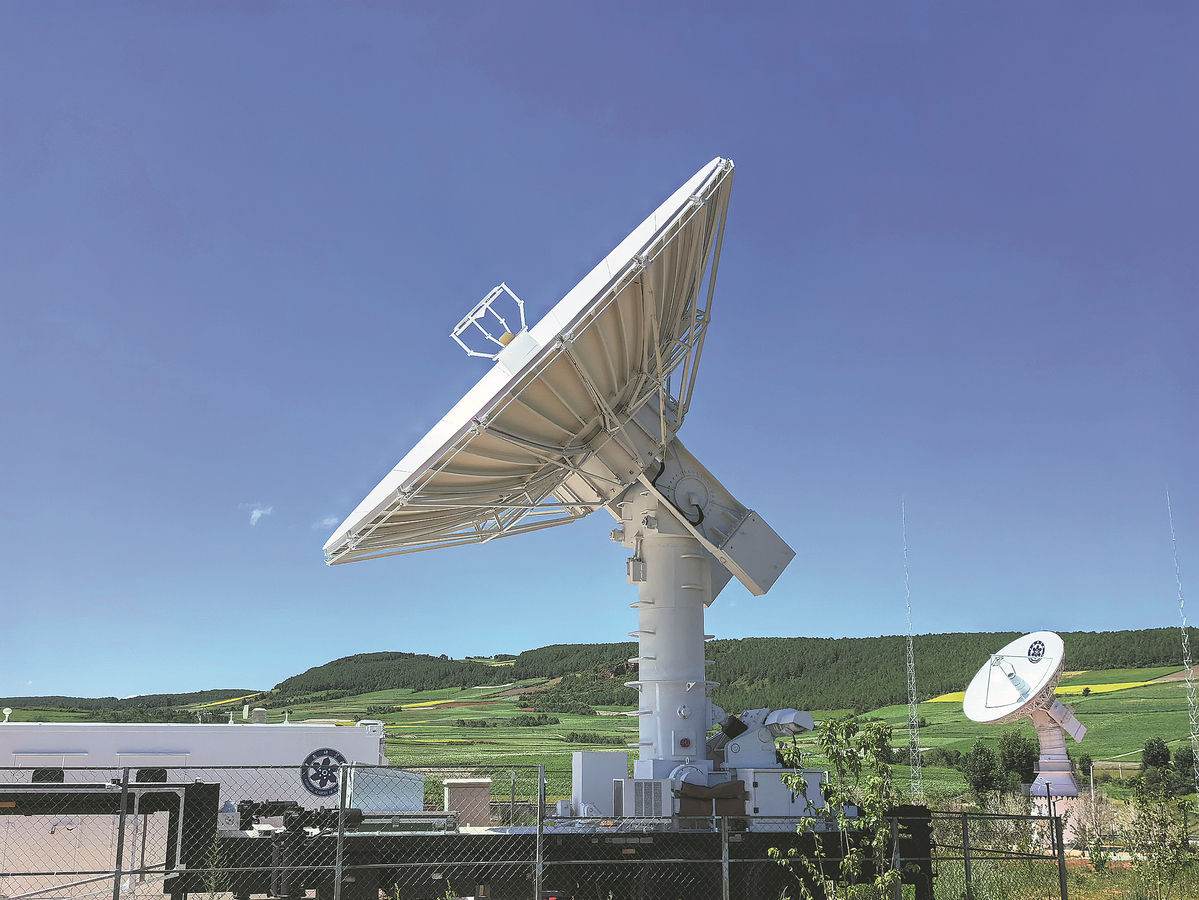Satellite ground stations provide key link in stable data flow


In September, the Lijiang station, located at an altitude of 2,827 meters in Yulong Naxi autonomous county, was completed and put into operation, filling the gap in the real-time reception for satellites within 500 kilometers. As a result, China has achieved real-time reception of satellite data across all of its national territory and 70 percent of the land area in Asia.
"When a satellite passes over China, the data it collects is received by the ground station and transmitted in real-time to the Beijing headquarters for distribution to relevant units or research departments, enabling them to access the data promptly," Tang explained.
Real-time data transmission holds significant importance. For instance, in the case of environmental disaster monitoring satellites, such as those that detect forest fires, earthquakes or oil spills, timely data allows relevant departments to make faster and more accurate assessments and decisions, allowing them to respond promptly and minimize the impact of disasters.
"These aspects may not be directly noticeable in our daily lives, but they are indispensable for the smooth functioning of society and our livelihoods," Tang said.
Equipped with remote sensing satellites carrying different payloads, these satellites can be used for various purposes such as resource exploration, urban planning, environmental monitoring, disaster mitigation and space exploration.
"Before 1986, scientists who needed to use remote sensing satellite data had to purchase it at a high cost from countries like the United States," Tang noted. "But now, China's satellite ground station receiving technology has full independent intellectual property rights."
At the Lijiang station, four researchers work in shifts. This newly operational receiving station with four receiving antennas undertakes the data reception tasks for 26 national satellites.
"Technically, the operation center in Beijing can monitor the Lijiang station in real-time. In case of errors or emergencies, Beijing can detect them promptly. This means we only need a few researchers stationed locally, which is the result of continuous development of ground stations over the years," Tang said.
Before coming to Lijiang, Tang was a technical staff member at the Miyun station in Beijing.
"The Miyun station's operations are already quite mature. When I heard that building the Lijiang station required staff deployment, I volunteered eagerly. Because during the initial construction phase of a receiving station, there is more technical knowledge to be gained," Tang said.
Upon arriving in Lijiang, researchers started from scratch, selecting calibration points, conducting signal tests, and watching as the antennas were gradually erected. During the process, Tang and his colleagues lived in a village in Lijiang for over a year.
"I still remember during testing, we climbed to the opposite hill, manually transmitting signals to test various antenna parameters. Finally, witnessing the completion of the antennas, a significant project I was involved in from start to finish, was truly fulfilling," he said.
Today, the Lijiang station operates routinely, transmitting vast amounts of data to the Beijing headquarters daily. Tang and his team continue their daily maintenance of equipment to ensure the secure and reliable passage of this massive data flow.
"The discoveries and operational experiences in our daily work, each seemingly insignificant, accumulate and eventually lead to a qualitative change. This provides valuable insights for the construction of future satellite receiving stations," Tang said.
"This is the significant meaning I see in my daily work — experiences in operations feedback into engineering, facilitating the upgrade and iteration of major scientific research facilities, maintaining our advanced position internationally," he said.
- China, CELAC vow to broaden education collaboration
- Sichuan amphibious ship returns after maiden sea trial
- Justice on horseback: bringing the court to Xinjiang's herders
- China issues alert on overseas study in Japan
- Chinese scientists discover lunar rust, revealing new oxidation process on the moon
- China's major airlines offer refunds and rebooking for Japan-bound passengers amid security alert




































